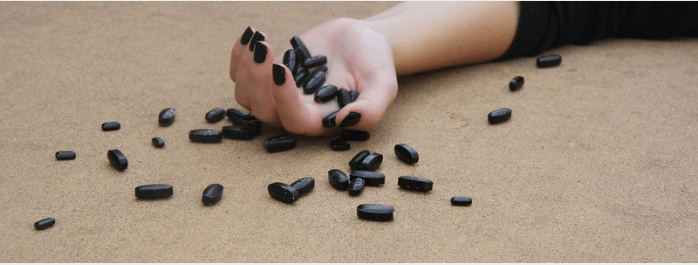A 30-year-old woman presents having taken an overdose of an unknown substance. She is drowsy and slurring her speech. Her observations are as follows: HR 116, BP 91/57, SaO2 96% on air. GCS 11/15. The results of her arterial blood gas (ABG) on air are shown below:
- pH: 7.24
- pO2: 9.4 kPa
- PCO2: 3.3 kPa
- HCO3-: 22 mmol/l
- Na+: 143 mmol/l
- Cl–: 99 mmol/l
- Lactate: 5 IU/l
1. Describe the findings on this patient’s arterial blood gas.
Show Answer
Arterial blood gas (ABG) interpretation helps us with the assessment of a patient’s respiratory gas exchange and acid-base balance. The normal values on an ABG can vary a little between analysers but broadly speaking are as follows:
| Variable | Range |
| pH | 7.35 – 7.45 |
| pO2 | 10 – 14 kPa |
| PCO2 | 4.5 – 6 kPa |
| HCO3- | 22 – 26 mmol/l |
| Base excess | -2 – 2 mmol/l |
The pertinent ABG findings in this case are as follows:
- Mild hypoxia
- Raised pH (acidaemia)
- Low PCO2
- Normal bicarbonate
- Raised lactate
2. Calculate this patient’s anion gap.
Show Answer
The anion gap represents the concentration of all the unmeasured anions in the plasma. It is the difference between the primary measured cations and the primary measured anions in the serum. It can be calculated using the following formula:
Anion gap = [Na+] – [Cl-] – [HCO3-]
The reference range varies depending upon which methodology is used to make the measurement but is usually 8 to 16 mmol/L.
Her anion gap can be calculated using the above formula:
Anion gap = [143] – [99] – [22]
Anion gap = 22
It can therefore be seen that she has a raised anion gap metabolic acidosis.
3. Which drugs or substances that could be the cause of this metabolic picture?
Show Answer
A raised anion gap metabolic acidosis usually occurs as a consequence of the accumulation of organic acid or the impaired excretion of H+ ions. The mnemonic CAT MUDPILES is a useful way of remembering the causes of a high anion gap metabolic acidosis:
- Carbon monoxide
- Alcoholic ketoacidosis
- Toluene
- Metformin, Methanol
- Uraemia
- Diabetic ketoacidosis
- Propylene glycol
- Iron, Isoniazid
- Lactic acidosis
- Ethylene glycol
- Salicylates
Header image used on licence from Shutterstock






Very nice and knowledgable presentation. Will be appreciated if continued
Presented in an excellent way and knowledgable information. Thank you very much.
Excellent presentation thanks to you
Excellent,.organized,and simple way of good presentation..which made it easy to understand and been very useful..Thanks alot.
Nice ..thank you
interesting
Information is correct and I will like to read all your blogs